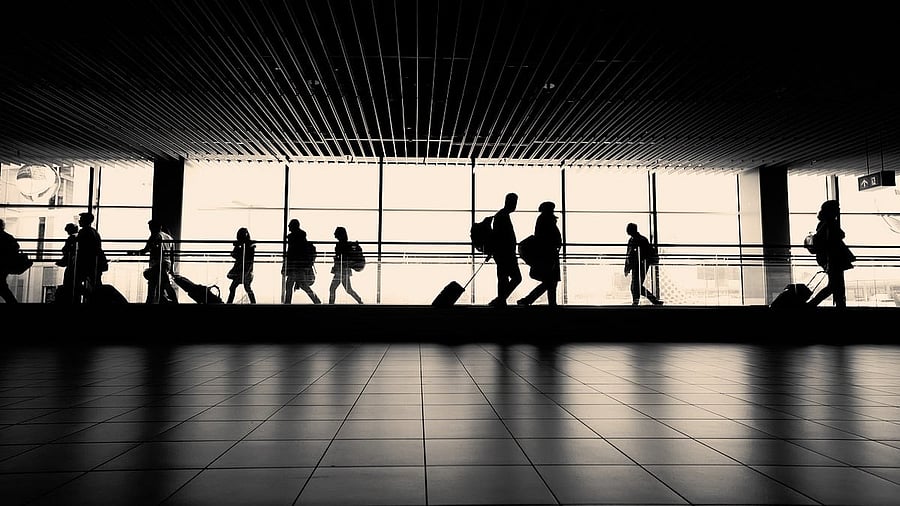
Representative image of an airport.
Credit: Pixabay Photo
The spate of hoax bomb threats to airlines which started last week has continued almost every day since then, and has severely hit the operations of both domestic and international carriers. A large number of flights were delayed or diverted after the calls set off disruptions in airline operations. On Tuesday, threats were issued to about 50 flights, taking the number of these calls since October 14 to about 170. The main targets were Indian airlines but others such as American Airlines, JetBlue and Air New Zealand also received threats. Between 2014 and 2017, Indian flights had received a total of about 120 bomb threats. The disruptions in the flight services have caused inconvenience on a wide scale to passengers and created an air of uncertainty. It is estimated that over nine days, they have caused losses of about Rs 600 crore to the airlines.
The problems need to be addressed technically and legally. Most threats have emanated from suspended social media accounts with their IP addresses linked to Europe. The use of virtual private networks has made tracking difficult. Some calls are suspected to have originated in the UK. It is technically possible to create red herrings and mislead the investigations, and the culprits could also be operating within the country. Mumbai Police have detained a teenager from Chhattisgarh in connection with threats to three flights. Apparently, the boy was trying to implicate a friend with whom he had a financial dispute. But it is difficult to imagine that all the hoax calls were individual actions unrelated to each other. Last year around this time, airlines, museums, and schools in France received a large number of hoax calls, and the perpetrators, most of them youngsters, were arrested after investigations. Schools in India have also received threats. There should be a thorough investigation that can identify the group or the persons behind the calls and bring them to book.
Union Minister for Civil Aviation K Ram Mohan Naidu had described the calls as ‘’isolated incidents’’ but has now said that the government intended to amend the aircraft security rules and put the culprits on a no-fly-list for many years. Most of the existing laws and rules are related to crimes reported inside the aircraft. The move is to extend them to crimes outside the aircraft and enhance punishment. Naidu also said the threats will be made cognisable offences. Priority should be given to investigate the series of hoax calls from all angles, identify the culprits, find out their motives, and put an end to the calls. Only that can end the disruptions and the uncertainty.
